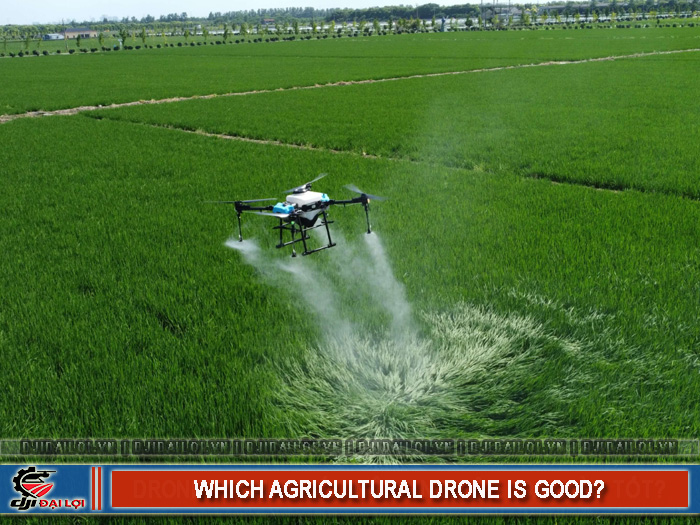
The technological revolution is transforming modern agriculture, and agricultural drones are emerging as top tools to boost productivity, reduce costs, and optimize crop management. However, with dozens of models and brands on the market, finding one that’s truly “worth the money” and suitable for your specific needs can be challenging. So, which agricultural drones perform best based on real-world efficiency, integrated technology, and user requirements?
A high price or big brand name doesn’t always guarantee effectiveness. Real performance depends on multiple technical factors and field conditions. Below are the core criteria to evaluate a worthwhile agricultural drone:
Depending on crop type and area, payloads from 10L to 30L determine how much can be sprayed at once. For large rice fields, choose at least 20L to optimize productivity.
Models with GPS RTK, terrain sensors, and map-based flight capabilities ensure precise spraying and reduced chemical waste. Some advanced drones can even fly autonomously along pre-mapped routes via mobile apps.
The battery is the “heart” of the drone. Ideal flight time ranges from 20–30 minutes per charge. High-capacity lithium batteries extend operation time and reduce interruptions, especially in rural areas.
A good drone should have obstacle avoidance sensors, and automatic return-to-home when losing connection or running low on battery - crucial for new operators.
Choose brands with available spare parts and technical support in Vietnam. Avoid unverified imports despite low prices.
A quality drone should ensure a return on investment (ROI) within 12–18 months by cutting labor and pesticide costs while improving yields.
Drones must be approved by the Plant Protection Department to legally spray agricultural chemicals.
→ With these criteria, you can confidently evaluate whether a given agricultural drone suits your operational needs.
|
Criteria |
DJI Agras T50 |
XAG P100 Pro |
MiDrone X8 Plus |
AgriDrone R20 |
|---|---|---|---|---|
|
Tank capacity |
50L (spray), 55kg (spreading) |
50L (multi-function) |
16L |
20L |
|
Spray efficiency per hour |
~24 ha/h |
~13 ha/h |
~5 ha/h |
~7 ha/h |
|
Flight time per charge |
~17 min (no load) |
28 min |
20 min |
22 min |
|
Terrain sensor |
Yes |
Yes |
Yes |
Yes |
|
Obstacle avoidance |
360° radar |
Front/back/left/right |
Front & bottom |
Front & back |
|
Full automation |
Yes, RTK + mapping |
Yes |
Yes (GPS map) |
Yes |
|
Flight management app |
DJI SmartFarm / O3 |
XAG One |
MiDrone App |
In-house App |
|
Auxiliary functions |
Spray + sow + spread |
Spray + fertilize + sow |
Basic spraying |
Spray + spread |
|
Price (full kit) |
~328,000,000 VND |
~460,000,000 VND |
~185,000,000 VND |
~220,000,000 VND |
|
Brand reliability |
Global – 12-24 mo warranty |
Global – 18 mo |
Local – 12 mo |
Local – 12 mo |
Practical use of agricultural drones has shown significant improvements in efficiency and cost savings. However, improper operation can lead to accidents or financial losses.
|
Brand |
Origin |
Key features |
|---|---|---|
|
DJI Agriculture |
China |
Advanced tech, strong ecosystem, excellent warranty |
|
XAG |
China |
High automation, powerful software |
|
MiDrone |
Vietnam |
Low cost, quick support, easy operation |
|
AgriDrone |
Vietnam |
User-friendly, nationwide service |
|
EAVision |
China |
Ideal for tall crops (coffee, durian, pepper) |
→ Among them, DJI and XAG are the top choices for cooperatives and enterprises due to stable technology and reliable after-sales service.
Selecting the right agricultural drone isn’t about price or brand alone - it depends on farm size, crop type, budget, and technical support.
To invest wisely, calculate ROI carefully and consider scalability for future expansion.
Yes. Many models now feature multispectral or thermal cameras for monitoring plant health and soil moisture.
Yes. Some hybrid drones perform simultaneous spraying and mapping, saving time in precision agriculture.
Potentially. Always use encrypted systems and controlled data access to prevent unauthorized exposure.
Yes. Drones with infrared sensors detect dry or over-irrigated zones for efficient watering schedules.
Early morning (6–9 AM) or late afternoon (4–6 PM) under low wind and mild sunlight for optimal results.